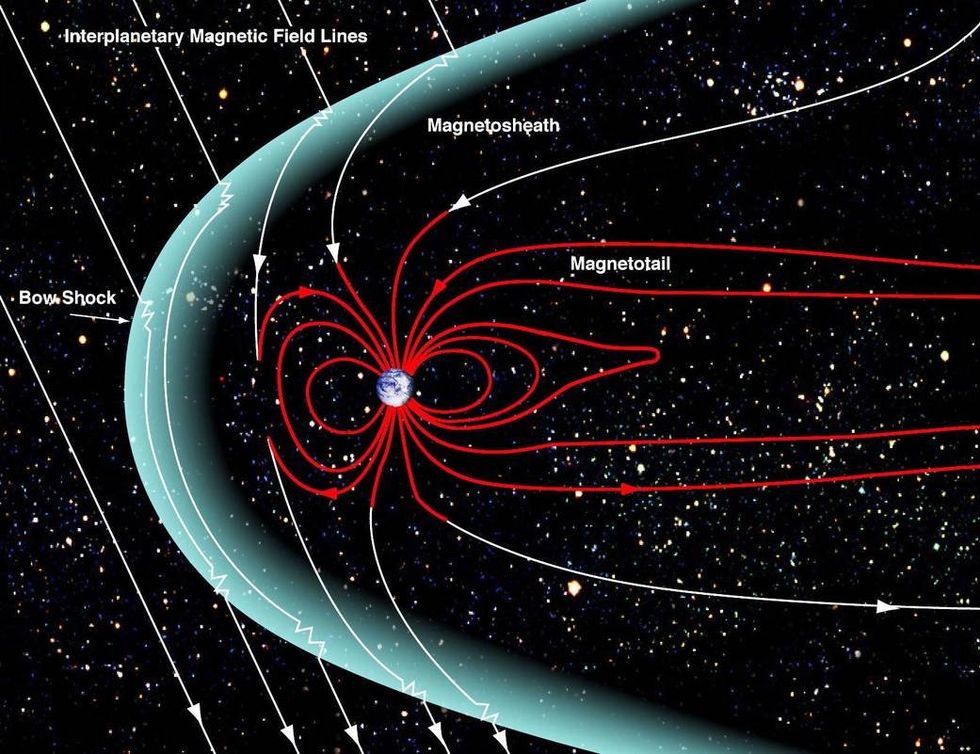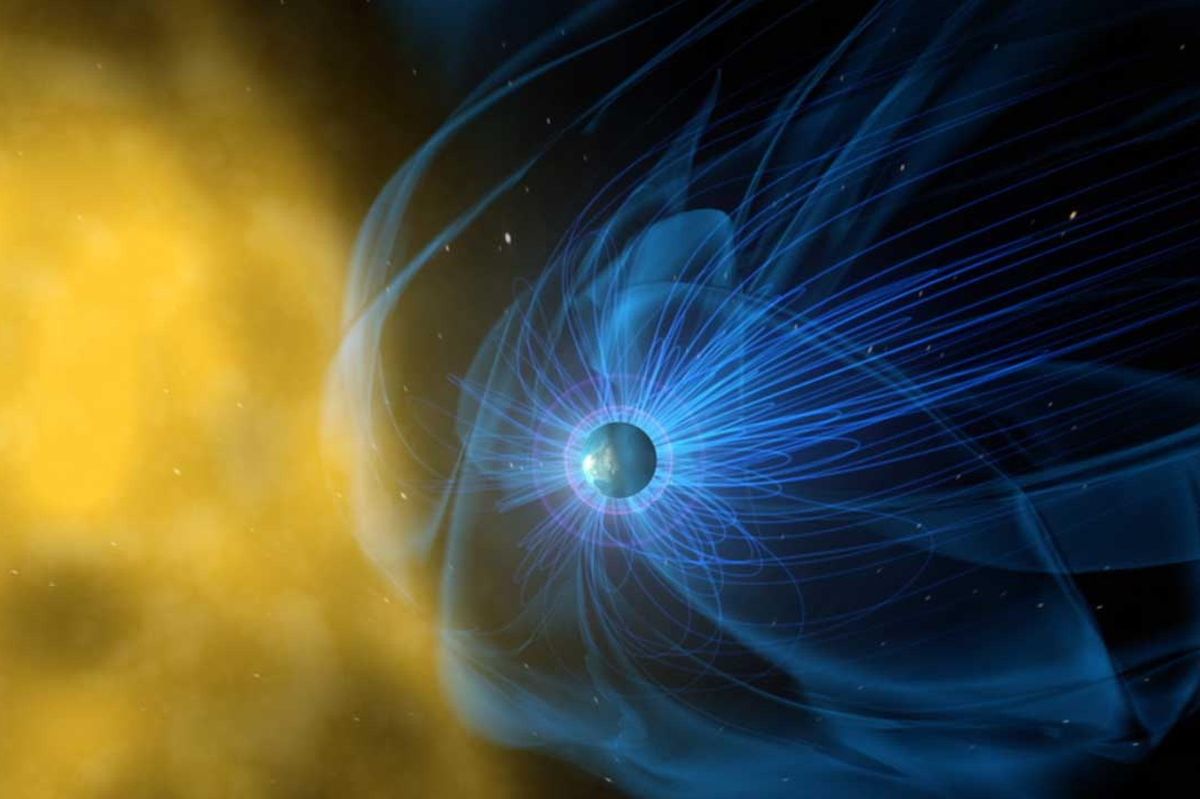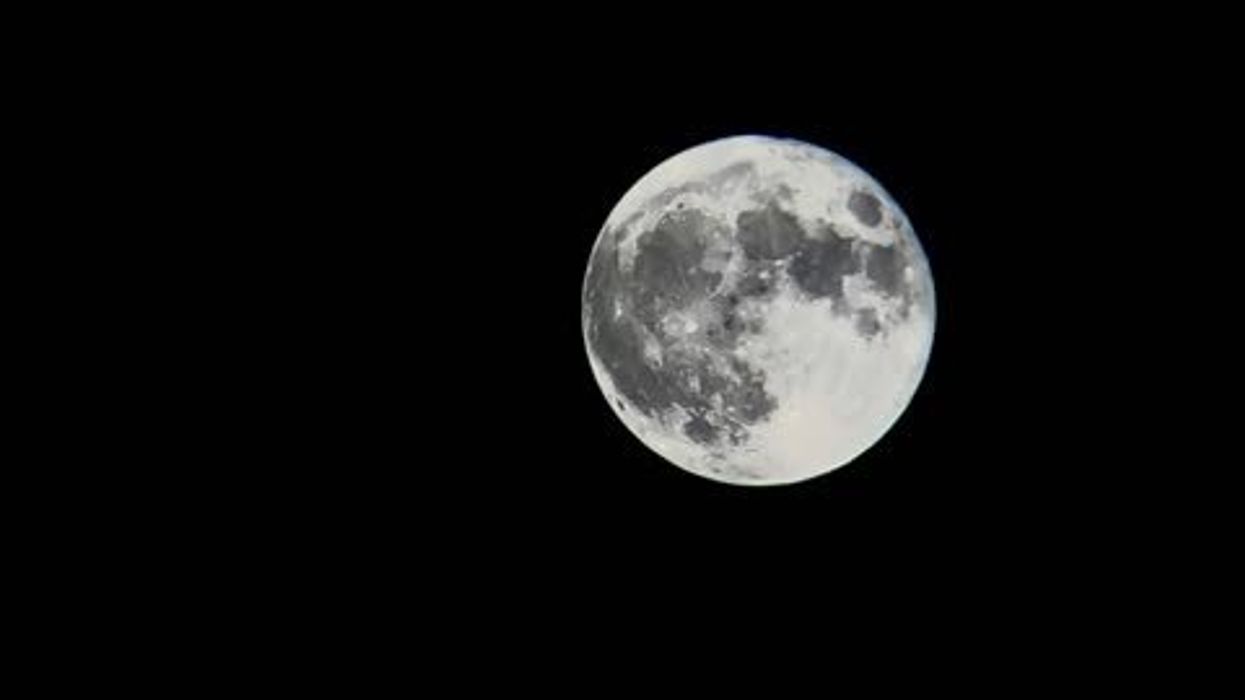Harriet Brewis
Sep 19, 2023
2023’s Rare Super Blue Moon Dazzles 6
Spectee / VideoElephant
The most crucial ingredient for creating life has been found on the Moon and, now, scientists think they’ve figured out why.
Whilst we’ve known for some time that there’s ice on our closest celestial neighbour, experts have struggled to explain where it came from.
Now, a new study suggests that waves of electrons found in the Earth’s tail (yes, it has one) could be helping to generate frozen H2O on the lunar surface.
The knowledge could help us better understand where to locate pockets of water on the Moon and it could help us prepare for living there long-term.
The research, led by Shai Li of the University of Hawaii, connects this enigmatic presence of water to the region around the Earth called the magnetosphere.
The magnetosphere, which is dominated by the world’s magnetic field, is, according to NASA, a “vast, comet-shaped bubble” that “shields our home planet from solar and cosmic particle radiation, as well as erosion of the atmosphere by the solar wind.”

As this solar wind pummels the magnetosphere, the side of the bubble facing away from the sun stretches out into an immense tail, dubbed (you guessed it), the magnetotail which is packed with highly charged electrons and ions.
As the Moon orbits Earth, it passes through the magnetotail. And so, just as the magnetosphere shields our planet, the magnetotail shields our beloved natural satellite from charged particles, while still allowing light to reach the lunar surface, as Space.com reports.
"This provides a natural laboratory for studying the formation processes of lunar surface water," Li said in a statement.
The researchers used data collected between 2008 and 2009 by India’s Chandrayaan-1 spacecraft to analyse how water formation changes as the Moon passes through the magnetotail.
They pointed out that when the Moon is outside of the magnetotail, it is bombarded with solar winds. Previous studies suggested that hydrogen ions within these winds help generate water on the lunar surface.
However, when the Moon is inside the magnetotail, it is no longer smashed by solar wind protons, so scientists expected water formation to drop to nearly zero.
And yet, Li and his team found that this wasn’t the case.
"To my surprise, the remote sensing observations showed that the water formation in Earth’s magnetotail is almost identical to the time when the moon was outside of the Earth’s magnetotail," he revealed.
"This indicates that, in the magnetotail, there may be additional formation processes or new sources of water not directly associated with the implantation of solar wind protons."

The researchers concluded that other forces are at play; more specifically, electrons.
This could be because high-energy electrons within the magnetotail react with the lunar soil, releasing trapped hydrogen that can then form water, as Science Alert notes.
"In the magnetotail, there may be additional formation processes or new sources of water not directly associated with the implantation of solar wind protons," Li said.
"In particular, radiation by high energy electrons exhibits similar effects as the solar wind protons."
Li began investigating the interaction between the Moon and magnetotail by looking at weathering processes that occur on the lunar surface as the satellite passes through the bubble. He found that oxygen in the tail rusts iron in the Moon’s polar regions.
In his statement, he said that his more recent study into water formation, as well as his “previous findings of rusty lunar poles” indicate that “Mother Earth is strongly tied with its Moon in many unrecognised aspects.”
His plan is now to investigate the water content at the lunar poles at different points in the Moon’s passage through the magnetotail.
It’s one small step for research that could mean one giant leap for mankind…
Sign up for our free Indy100 weekly newsletter
Have your say in our news democracy. Click the upvote icon at the top of the page to help raise this article through the indy100 rankings.
Top 100
The Conversation (0)














